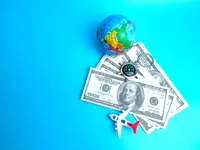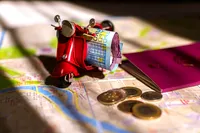Currency in Colombia
What Currency Does Colombia Use Now

Colombia, a country pulsating with life, colour, and a rich cultural history. From its bustling cities to its lush coffee plantations, its stunning landscapes to its welcoming people, there's much to explore and discover in this South American gem. When it comes to finances while traveling, one crucial thing to note is the currency being used currently. In Colombia, the official currency is the Colombian Peso, identified internationally with the symbol COP.
The Colombian Peso comes in different denominations: 1.000, 2.000, 5.000, 10.000, 20.000 and 50.000 COP notes are the most frequently used. As for coins, they range from 50 to 1.000 pesos. Knowing this is essential for every traveler planning to spend time and money in the vibrant country of Colombia.
Credit and Debit Cards in Colombia

While cash remains widely accepted in Colombia, the usage of credit and debit cards has significantly increased over the last years. Mastercard and Visa cards are widely accepted in most restaurants, hotels, and bigger stores. American Express is also accepted but to a lesser degree.
However, keep in mind that while card payment is quickly becoming the norm, smaller businesses, street vendors, local transportation, and remote regions may still primarily deal in cash. It's always wise to keep a small amount of cash on hand for such situations. Additionally, always ensure you notify your bank of your travel plans to prevent any inconvenient card blocks during your trip.
Using Cash in Colombia
Cash is still a widely used form of payment in Colombia, especially at small businesses, local markets, and rural areas. Visitors are advised to keep smaller notes or change for easy transactions, as smaller traders might find it hard to give change for those higher denomination notes or refuse to accept them altogether. To stay safe, avoid carrying large amounts of cash and split your money between different bags or pockets.
When converting your money, it’s recommended to exchange currency at banks or official bureaus as they offer better rates than the exchange desks found at airports. Alternatively, withdrawing directly in Colombian pesos from an ATM could be a better option as they often provide competitive exchange rates.
ATMs in Colombia

ATMs are plentiful in major Colombian cities and even in smaller towns. Most of the ATMs in Colombia offer services in English, making it easy for tourists to handle their transactions. Visa and Mastercard are widely accepted, and some ATMs also accept cards from international networks like Cirrus and Plus.
There is generally a fee for withdrawing money, and the amount can depend on your bank and the Colombian bank. Thus, it may be more cost-effective to withdraw larger amounts less frequently. Make sure to check with your bank about foreign transaction fees before your trip.
Bank Hours
Banking hours in Colombia can vary depending on the bank and the city. Generally, banks in Colombia operate from Monday to Friday, opening at 8:00 AM, and most banks close at 11:30 AM. They reopen in the afternoons at around 2:00 PM and close for the day at 4:30 PM. Some banks also open on Saturdays, usually from 9:00 AM to 12:00 PM.
Keep in mind that banks can be very busy, particularly at the beginning and end of the month, so prepare for potentially long wait times.
Embarking on a Colombian adventure not only promises unforgettable experiences but also requires sufficient financial planning. Knowing the right information about currency, banking hours, ATMs, and card usage can undoubtedly make your journey smoother and more enjoyable.
